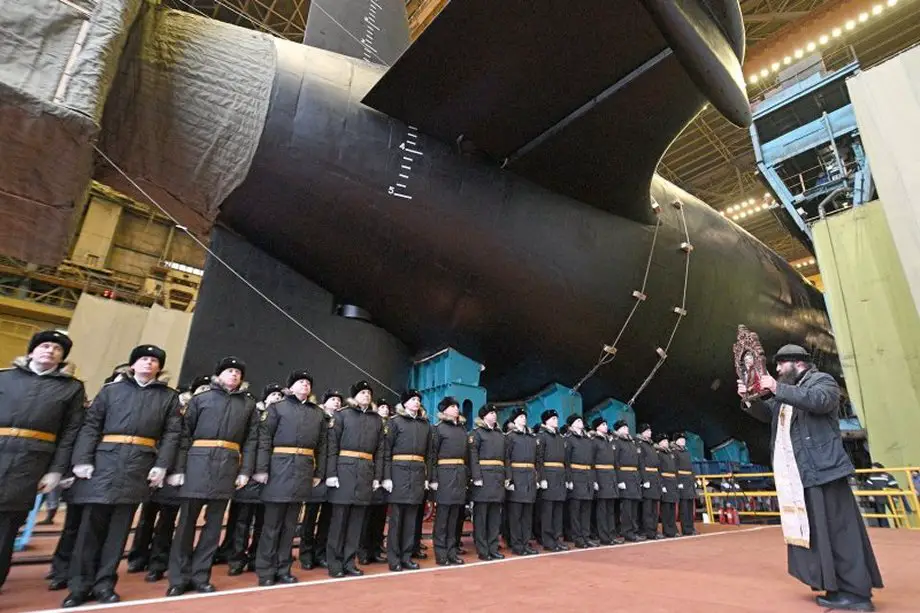Breaking news
Russia to start building 2 new Borei AM nuclear-powered submarines in 2024.
According to information published by Tass on March 27, 2024, Russia has announced plans to lay down two upgraded Borei-AM nuclear-powered submarines in 2024 at the Sevmash Shipyard (part of the United Shipbuilding Corporation).
Follow Navy Recognition on Google News at this link
 Launching ceremony of the Project 955A submarine Knyaz Pozharskiy. (Picture source: Kirill Zykov)
Launching ceremony of the Project 955A submarine Knyaz Pozharskiy. (Picture source: Kirill Zykov)
The construction of these advanced submarines is anticipated to continue until 2030, showcasing Sevmash Shipyard's accelerated production pace, a stark contrast to the construction timelines of similar American submarines.
Despite the secrecy surrounding the specific upgrades, the "M" in the project's name hints at significant enhancements. Speculation suggests that while the armament might remain the same, with 16 Bulava ballistic missiles, the modifications could introduce advanced capabilities, possibly including new missile types with unpredictable trajectories, akin to the Avangard hypersonic glide vehicle
In addition to weaponry, improvements in the submarines' acoustic systems are anticipated, enhancing their stealth and survivability. Another revolutionary aspect might be the inclusion of drones, positioning these submarines as a bridge to the next generation of naval warfare.
Project 955 Borei
Developed to replace older Delta III, Delta IV, and Typhoon-class submarines, the Borei-class vessels are the first series of submarines that Russia has commenced since the Soviet dissolution. The design of the Borei-class submarines includes a hydrodynamically efficient hull that reduces broadband noise, marking a significant advancement in stealth technology.
This design feature is further complemented by the first-ever use of pump-jet propulsion in Russian nuclear submarines, a system that contributes to the submarine's quiet operation. Reports suggest that the noise level of the Borei class is significantly lower than that of previous Russian SSBN generations, and even lower than that of the U.S. Virginia-class submarines, though some sources note that their hydraulic pumps may become noisier after some time in operation, potentially compromising their stealth capabilities.
The Borei-class submarines are approximately 170 meters in length with a beam of 13 meters, capable of reaching speeds of up to 29 mph (46 km/h) when submerged. They are designed to carry the RSM-56 Bulava submarine-launched ballistic missiles (SLBMs), which are a modified version of the Topol-M ICBM. Originally planned to carry 12 missiles, the design was adjusted to accommodate up to 16 Bulava missiles due to the missiles' reduced mass. The cost of constructing a Borei-class submarine was estimated at around 23 billion rubles ($734 million USD in 2010 prices), which is significantly lower compared to the cost of submarines from other leading naval powers.
The improved version, Project 955A or Borei-A, incorporates enhancements over the original Borei design, such as improved communication and detection systems, better acoustic stealth, increased maneuverability, and a redesigned sail for reduced hydrodynamic resistance.


























